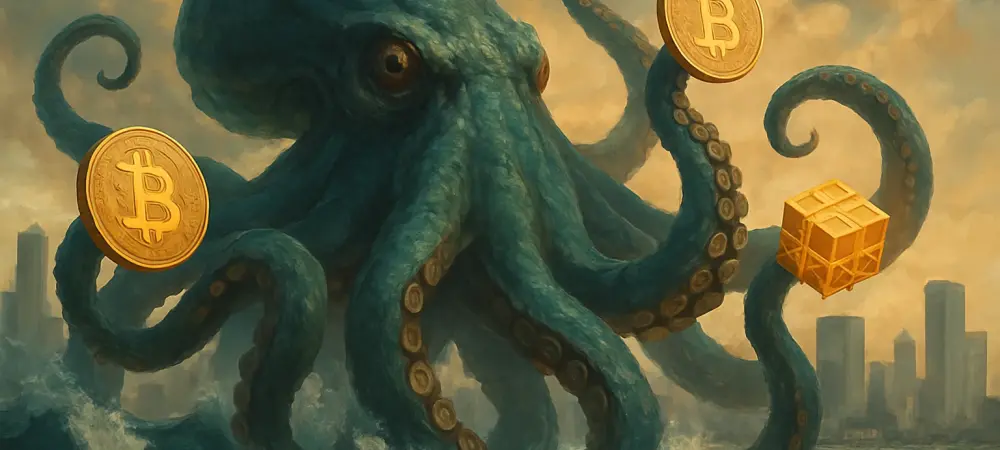I’m thrilled to sit down with Arjun Sethi, co-CEO of Kraken, a leading digital asset platform founded in 2011 that has just secured an impressive $800 million in funding. With a mission to bridge traditional finance and digital assets, Kraken is pushing boundaries in the fintech space through its vertically integrated infrastructure and multi-asset ecosystem. In this conversation, we’ll explore the significance of this massive capital raise, the company’s vision for on-chain financial products, the strategies behind their rapid expansion, and what lies ahead for this innovative platform.
How does this $800 million funding round shape Kraken’s future, and what does it mean for your long-term vision?
This funding is a game-changer for us. It’s not just about the capital; it’s a validation of our mission to create a trusted, regulated infrastructure for the open financial system. With $800 million, we can accelerate our strategy to bring traditional financial services on-chain and expand our global footprint. Long-term, we’re focused on building a platform where anyone can trade any asset, anytime, anywhere. This raise gives us the resources to innovate faster, enter new markets, and keep pushing the boundaries of what’s possible in digital finance.
Can you break down what it means to bring traditional financial products on-chain, and why this is a priority for Kraken?
Simply put, bringing products on-chain means taking familiar financial tools—like stocks, bonds, or savings accounts—and integrating them into blockchain technology for greater transparency, efficiency, and accessibility. It’s a priority because the current financial system often lacks inclusivity and can be slow or costly. By leveraging digital assets and tokenization, we can democratize access to these products, cut out unnecessary intermediaries, and create a more seamless experience for users around the world.
What drew high-profile investors like Jane Street, DRW Venture Capital, and Citadel Securities to commit to this funding round?
I think it comes down to alignment on vision and opportunity. These investors recognize the massive potential in bridging traditional finance with digital assets, and they see Kraken as a leader in building the infrastructure to make that happen. Our track record of profitability, with $1.5 billion in revenue in 2024 and even more in 2025 so far, shows we’re not just dreaming big—we’re executing. Their confidence in our regulated, secure platform and our ability to scale globally was a huge factor in their decision to come on board.
With Kraken’s wide range of services—from spot trading to staking and payments—how do you ensure everything operates smoothly while maintaining high standards?
It’s all about our integrated architecture. We’ve built a system that handles everything—matching, custody, clearing, settlement, and more—in-house. This allows us to deploy new asset classes quickly while keeping a tight grip on regulatory compliance and security. It’s not easy, but our focus on vertical integration means we can control quality at every step. We also invest heavily in our team and technology to stay ahead of challenges, ensuring we meet the strictest standards no matter how broad our offerings get.
Kraken has shown incredible financial success recently, surpassing $1.5 billion in revenue in just the first three quarters of 2025. What’s fueling this growth?
A big driver has been the growing demand for digital assets and diversified financial products. Our multi-asset ecosystem, which spans spot trading, derivatives, and staking, has resonated with both retail and institutional clients. We’ve also seen significant traction in key markets as more people seek trusted platforms to engage with crypto and tokenized assets. Balancing this growth with reinvestment into new products and expansion is critical, but our profitability gives us the flexibility to innovate without losing focus on financial health.
Can you share more about recent moves like acquiring NinjaTrader for U.S. futures trading and launching equities and tokenized equity trading?
Absolutely. Acquiring NinjaTrader was a strategic step to strengthen our U.S. futures trading capabilities, giving our clients access to a broader range of instruments through a trusted platform. On the equities side, launching traditional and tokenized equity trading is part of our mission to bring all asset classes under one roof. Tokenized equities, in particular, are exciting because they allow fractional ownership and 24/7 trading on the blockchain, which is a huge leap forward in accessibility and efficiency for investors.
Looking ahead, what’s your forecast for the future of on-chain financial products and Kraken’s role in shaping that landscape?
I believe on-chain financial products will become the norm over the next decade as blockchain technology matures and gains wider acceptance. The benefits—transparency, speed, and lower costs—are just too compelling to ignore. Kraken’s role will be to lead the charge by building the most trusted, regulated platform for these innovations. We’re already working on new asset classes, advanced tools, and expanded services across regions like Latin America and Asia Pacific. My forecast is that we’ll see a massive shift toward digital finance, and Kraken will be at the forefront, making it accessible to everyone, everywhere.

